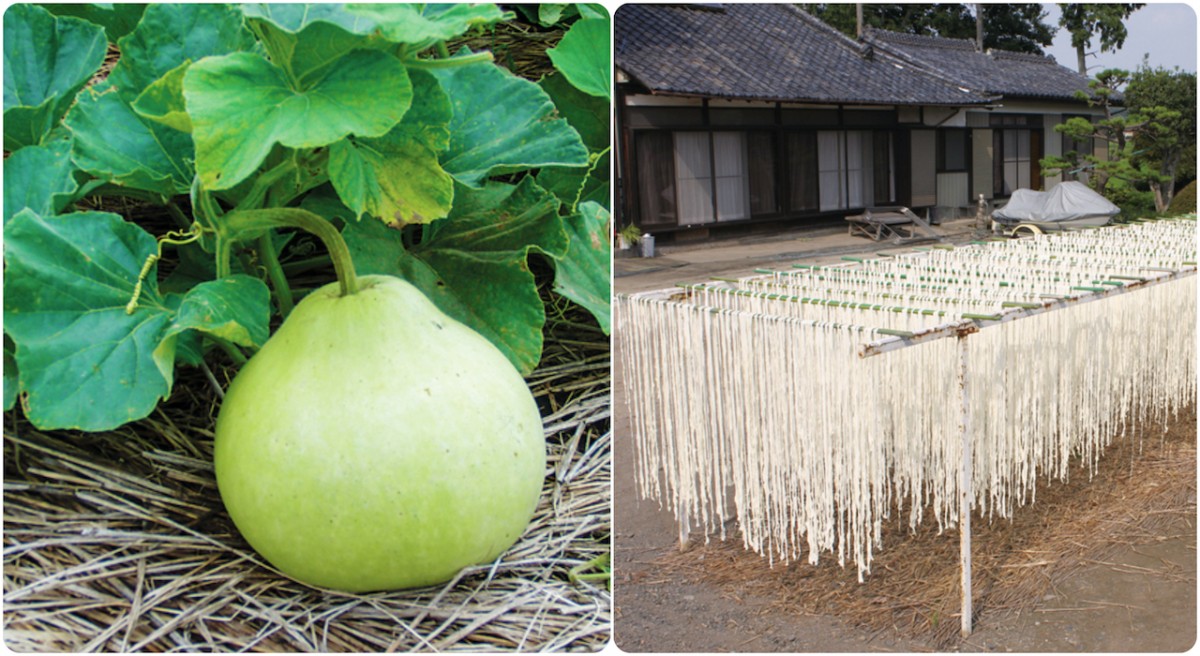There are hundreds of members of the gourd family (Cucurbitaceae) with sundry shapes, sizes and colors. Gourds were one of the earliest plants to be domesticated, about 13,000 years ago. Probably native to Africa, gourds quickly dispersed throughout the world. Archeological evidence pointing to cultivation and use of gourds in Japan dates back more than 8,000 years.
Some gourds we think of as fruit (watermelon, canteloupe), others as vegetables (cucumbers, zucchini, bitter melon and pumpkin); all produce vines that climb, or run along the ground. Many hard-shelled gourds are used as vessels, some are even crafted into musical instruments. In addition, folk medicine traditions in many parts of the world laud gourds as effective anti-inflammatory and analgesic agents with coolant properties.
Fukubé, pictured above, is the “fruit” of a Japanese yūgao gourd. The Japanese peel fukubé, into ribbon-like strips and dry them, The dried gourd ribbons are called kampyō, pictured below, to the left. As with all dried foodstuffs, flavor and nutrients become concentrated with dehydration. The liquid from re-hydrating kampyō becomes a lovely stock (check the label to be sure your kampyō has not been dried with chemicals). The softened gourd ribbons have many uses: as edible ties, as a filling for sushi rolls, and as crunchy (fried) chips, to name a few.
Visit my KITCHEN CULTURE blog for details and to download a recipe for assembling NORI MAKI sushi rolls.
 Visit Kitchen Culture Cooking Club for Project: Kampyō Because kampyō is shelf-stable at cool room temperature it is easy to keep on hand, ready to add flavor and nutrition to your mealtime.
Visit Kitchen Culture Cooking Club for Project: Kampyō Because kampyō is shelf-stable at cool room temperature it is easy to keep on hand, ready to add flavor and nutrition to your mealtime.
Stay connected.
I’m looking forward to your comments on the items I post to my Facebook page!
Follow me on Twitter!
I do hope you like it!
Elizabeth Andoh A Taste of Culture Culinary Arts Program Setagaya-ku, Tokyo 158-0095, Japan


Comments